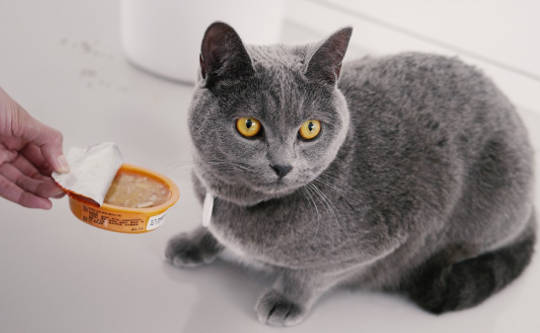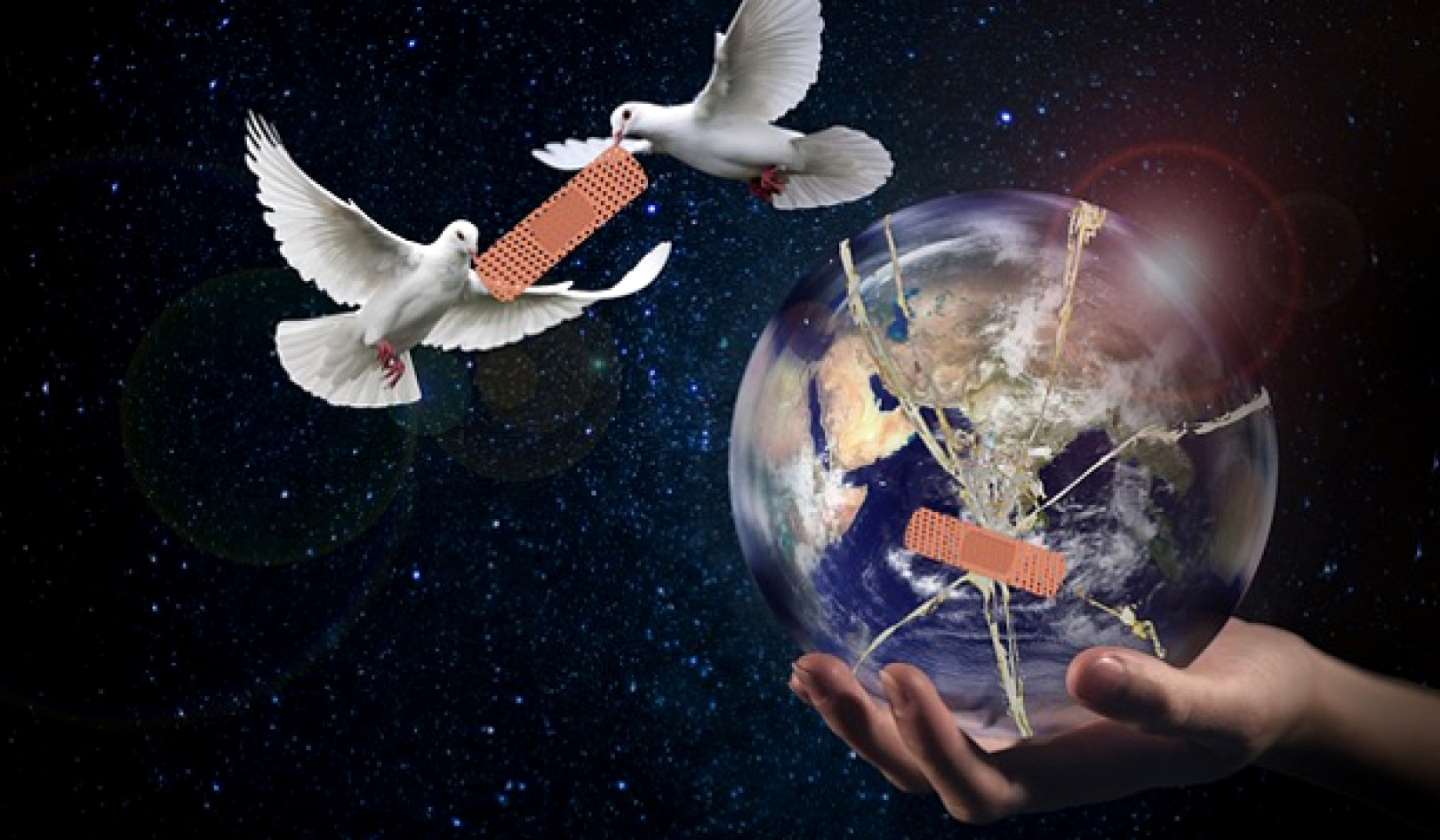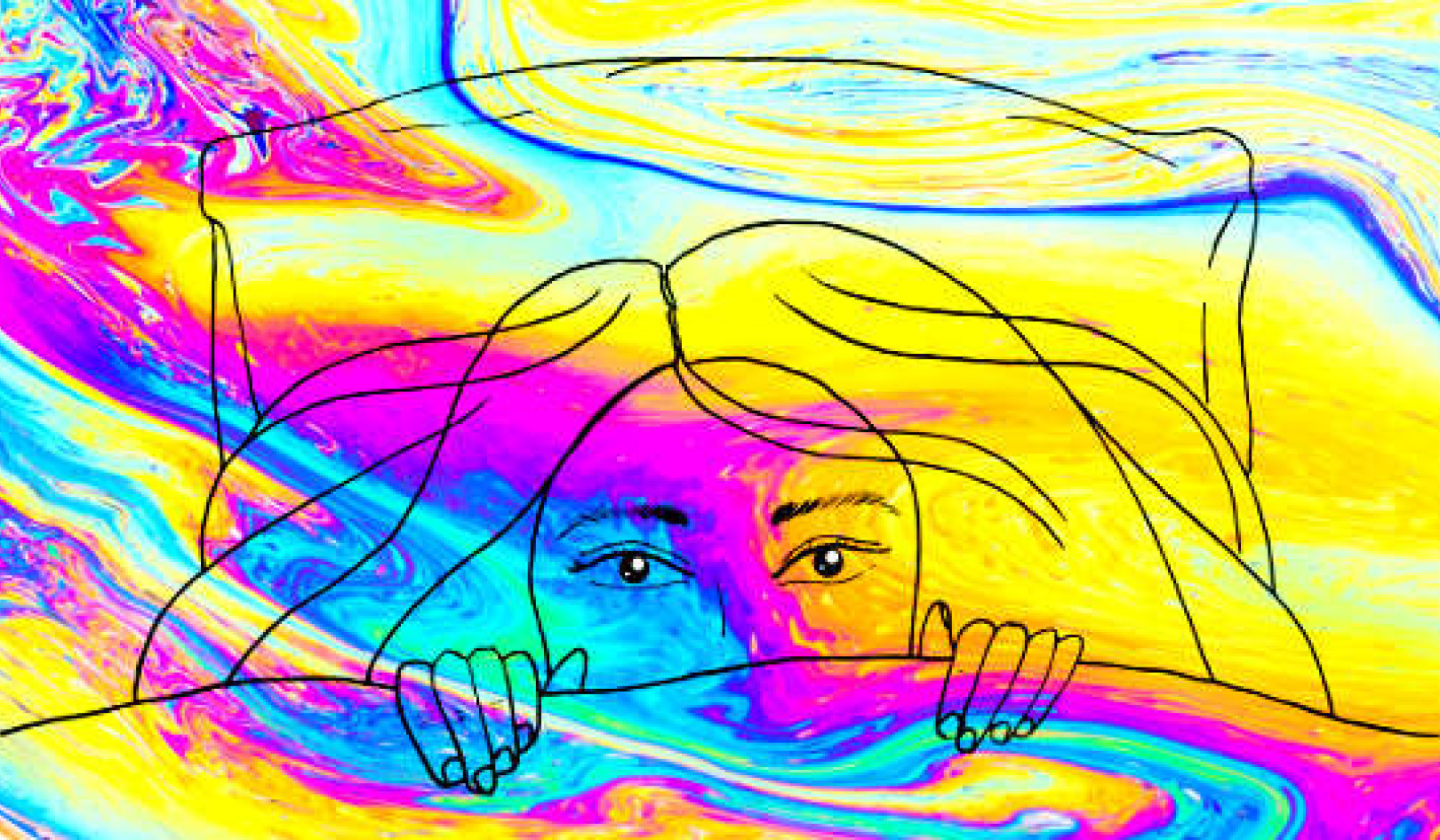
At daybreak in a large lake on the island of Palau in the Philippine Sea, a dance begins. Millions of golden jellyfish, each the size of a teacup, race east toward the light of the rising sun. Once they reach the sun’s early morning rays, they halt. Then slowly, as the sun makes its way east to west, the jellies follow its arc. As dusk falls these unique invertebrates come to rest on the lake’s western shore. The following morning, the dance begins again.
These jellies are just one of countless species whose life journeys are guided by the sun’s light. According to marine biologists, humpback whales use sunlight, along with the stars and the earth’s magnetic pull, to guide their ten-thousand-mile yearly migrations. Despite ocean currents, the whales swim in a straight line — north to feed and south to mate — varying less than one degree longitude from year to year.
The March to the Sea
Each fall in Antarctica, emperor penguins march, single file, on a treacherous seventy-mile journey inland to their breeding grounds. Once there, they pair off and mate. After the female lays an egg, she carefully transfers it to the feet of the male, who incubates it in the space between the base of his belly and the top of his feet. The female then returns to the ocean in search of food.
For two months, the males huddle together without food, balancing the eggs on top of their feet, while temperatures descend to one hundred degrees below zero Fahrenheit and wind speeds reach one hundred miles per hour. In an intricate dance, the males on the inside of the group move toward the periphery as their body temperatures rise, while those on the outside gradually move in to get warm.
Later, after the females return and the chicks hatch, the penguins trek en masse seventy miles back to the sea, as if they were one organism — each one a cell in an intricately connected body of life.
Following Inner Guidance
In addition to jellies, whales, and penguins, many other creatures — ranging from butterflies to songbirds — take part in extraordinary migratory journeys guided by something outside themselves that is inseparably aligned with something inside them.
When we learn about such feats, we often marvel at these creatures’ amazing ability to travel from point A to point B. In the absence of maps, printed directions, and GPS technology, how do they find their way to their locations — never varying their routes, never getting lost, never second-guessing themselves, and never bickering with one another about the right route to take?
Most of us only hear about these stories on the Discovery channel or from documentaries such as March of the Penguins. But when we come upon this phenomenon in our own lives, it stops us in our tracks and makes us realize that we miss a lot of activity happening around us.
Pepper Finds A New Home
When I moved into a rented cottage on Maui, Hawaii, some years ago, I found a little Russian Blue cat with gray fur and yellow eyes sitting on the porch staring at me. I learned that she was feral and that my neighbor Koa called her Pepper, and that she came by around the same time every day.
I bought a few cans of cat food from a nearby market, opened one, and left it on the porch. She gobbled it up, so I left food and water on the porch and each day Pepper came to eat. This went on for five months, and we began to grow friendly toward one another.
One day I saw Koa carrying a cardboard box with Pepper inside.
“Where are you taking her?” I asked.
“I have a friend on the other side of the island who wants her.”
The friend lived thirty-five miles away, and though I was fond of Pepper, I knew it was for the best as I was leaving for Europe within a few days.
The Light Shall Lead You Home
Three months later, after a friend picked me up from the airport and drove me back to the cottage, I found Pepper waiting there for me.
Surprised, I stepped over to Koa’s cottage. “When did you bring Pepper back?”
“I didn’t.”
Together we walked back to my cottage. Once he saw the cat, Koa said, “Oh my God.” Then he called his friend and asked, “Why did you bring the cat back?”
The friend replied, “I didn’t. She ran away almost as soon as you dropped her off. I never saw her again.”
Amazed that she had found her way home at the very moment I arrived, I renamed her Lani, which means “heaven” in Hawaiian. Soon I moved to a new home and I took her with me.
Copyright ©2018 by Jacob Israel Liberman.
Reprinted with permission from New World Library
www.newworldlibrary.com.
Article Source
Luminous Life: How the Science of Light Unlocks the Art of Living
by Jacob Israel Liberman OD PhD
 We are all aware of the impact of sunlight on a plant’s growth and development. But few of us realize that a plant actually “sees” where light is emanating from and positions itself to be in optimal alignment with it. This phenomenon, however, is not just occurring in the plant kingdom — humans are also fundamentally directed by light. In Luminous Life, Dr. Jacob Israel Liberman integrates scientific research, clinical practice, and direct experience to demonstrate how the luminous intelligence we call light effortlessly guides us toward health, contentment, and a life filled with purpose.
We are all aware of the impact of sunlight on a plant’s growth and development. But few of us realize that a plant actually “sees” where light is emanating from and positions itself to be in optimal alignment with it. This phenomenon, however, is not just occurring in the plant kingdom — humans are also fundamentally directed by light. In Luminous Life, Dr. Jacob Israel Liberman integrates scientific research, clinical practice, and direct experience to demonstrate how the luminous intelligence we call light effortlessly guides us toward health, contentment, and a life filled with purpose.
Click here for more info and/or to order this paberback book or order the Kindle edition
About the Author
 Dr. Jacob Israel Liberman is a pioneer in the fields of light, vision, and consciousness and the author of Light: Medicine of the Future and Take Off Your Glasses and See. He has developed numerous light and vision therapy instruments, including the first FDA-cleared medical device to significantly improve visual performance. A respected public speaker, he shares his scientific and spiritual discoveries with audiences worldwide. He lives on Maui, Hawaii.
Dr. Jacob Israel Liberman is a pioneer in the fields of light, vision, and consciousness and the author of Light: Medicine of the Future and Take Off Your Glasses and See. He has developed numerous light and vision therapy instruments, including the first FDA-cleared medical device to significantly improve visual performance. A respected public speaker, he shares his scientific and spiritual discoveries with audiences worldwide. He lives on Maui, Hawaii.
Books by this Author
at InnerSelf Market and Amazon



























